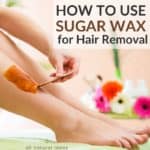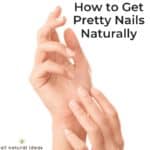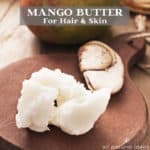It’s so tempting to pop a pimple. But when it comes to acne scar removal, your best weapon for preventing them in the first place is to resist the urge to pop. But if it’s too late, here are the most popular procedures to get rid of them.

Getting rid of scarring, at least in theory, should be simple. After all, acne vulgaris (A. vulgaris), perhaps the most common chronic skin condition, forms because of oil-clogged hair follicles. These follicles become further clogged with dead skin cells.
So, get rid of the oil and dead skin cells and the scarring goes away? Well, there are procedures and acne scar removal products that target clogged follicles. But it’s not so easy to get rid of them.
How Common is Acne Scarring?
Very common. In fact, approximately 95 percent of people with the chronic skin condition, have some level of it. In severe cases, the damaged part of the skin can have a permanent blemish.
Not only are these blemishes an aesthetic nuisance, they can also cause significant psychological distress. A low self-esteem can hinder quality of life.
And as time goes on and the physical reminders of the condition remains, in some people, there seems to be little to no hope that the marks will ever go away. Furthermore, much of society associates A. vulgaris as merely a phase of the teenage years. Adults with scarring suffer the indignity of having a condition that should have been over and done with decades ago.
Why Do Acne Scars Form?
It probably provides you no solace to hear that scarring is the body’s natural healing response. But without the formation of scars, your skin would be further damaged. The reason why this healing process occurs is because of an inflamed lesion.
Most often the lesion is a cyst (other forms of lesions are pustules and papules). When your pores become inflamed, they get overwhelmed with harmful bacteria, dead skin cells, and too much oil.
Consequently, your pores swell up. The walls of the pores tear. If the tear occurs near the skin’s surface, you’ll probably have no permanent reminder of it. But if the damage occurs deeper in the skin, below the epidermis, the bad gunk can damage skin cells.
As part of the healing process, collagen protein comes to the rescue. Collagen is the human body’s most abundant protein. It provides structural integrity to skin cells. But here’s an analogy of what happens when collagen repairs the skin….
You know how after a lamp or other piece of furniture is broken it’s never quite the same? Well, that’s how it is with your skin. It’s like trying to smooth over torn drywall with putty.
You can try as best as you can to fill the hole with spackle. But unless you’re a professional painter or home remodel specialist, if you repair it yourself, there will always be a physical reminder if you look close enough.
Home Remedies For Acne Scars
There are two problems with trying to minimize the appearance of the wound yourself. First is that there is no definitive research that any home-based methods work.
And secondly, one method may work at least somewhat minimally for one person, while it may not work for another person. Or worse, the same method for one person might make the condition worse in another.
Thus, before you try any of the following methods over a large area, test a tiny patch of skin first. If at first you don’t notice any improvement, that’s actually a good sign. You can retest the same area of skin and use more of it. Hopefully, after a few days, you’ll notice an improvement. And it goes without saying that if you notice the condition worsens after testing, stop immediately.
So without further ado, here are some home DIY acne scar removal ingredients:
Essential Oils
Give essential oils a few days to make a dent in the appearance of scars. But not just any essential oils will do.
Tea tree oil is one of the best. It contains antimicrobial and anti inflammatory properties. These chemical compounds minimize the appearance of acne breakouts. If you have 100% pure therapeutic-grade tea tree oil, dilute it with a carrier oil, such as coconut oil.
Use one ounce of coconut oil (or almond oil) for every 10 drops of tea tree oil. Apply the diluted tea tree oil to the scarred area using a cotton ball. Let it soak on the affected area for at least 15 minutes before washing.
If your scars are raised, tea tree oil may be more effective in comparison to smooth-surfaced scars.
You can also use thyme oil and myrrh, both of which contain detoxifying compounds.

Apple Cider Vinegar
Drinking apple cider vinegar may offer some health benefits, including balancing gut bacteria. But is applying ACV to your face for acne effective?
Again, there’s no literature in research journals proving it is. However, some people use it to minimize scarring.
Raw Honey
Not any honey will do for wound healing. The best kind of honey on the planet for this comes from New Zealand.
It’s called Manuka honey. Manuka has strong anti-bacterial properties. So in theory, it may help remove built-up and trapped bacteria in under the scar.
Baking Soda
Can applying a baking soda face mask do anything for acne scar removal? For some, it works. Perhaps because it scrubs the surface of the skin clean, lifting dead skin cells and dirt out from the pores. As a result it reduces swelling and redness.
AHA’s and BHA’s
Many people use alpha- and beta-hydroxy acids such as glycolic (an AHA) and salicylic acid (a BHA) in their skin care routine. These compounds eliminate dead skin cells and other trapped gunk that clog pores such as makeup particles. In essence, these substances act as a natural exfoliator.
Other at-home methods that can reduce inflammation are acne scar removal creams. Some creams mimic the action of microdermabrasion treatment, a non-invasive procedure that renews skin tone and texture.
Retinoids
Retinoids are something that you can use yourself at home. But you can’t easily make them yourself. For that, you’d need a lot of carrots and technical know-how in compound pharmacy. That’s because retinoids are compounds found in vitamin A.
The strongest retinoids are prescription-strength. They may be especially beneficial for those with hyperpigmentation.
Acne Scar Removal Surgery and Procedures
There are four main types of marks: ice pick, boxcar, rolling, and keloid. An article in the Journal of Clinical and Aesthetic Dermatology summarizes a panel on treating these types of lesions.
For the rolling variety, the panelists recommend using a filler and/or ablative resurfacing for atrophic marks. The resurfacing treatment smooths the scar. However, a dermal filler is necessary post-treatment.
As for the boxcar variety, laser therapy is recommended (either CO2 laser or erbium-YAG laser).
For icepick lesions, surgical or punch excision is the go-to protocol. In this method, a numbing agent is injected to remove the lesions. Two stitches are then left in for 8 to 10 days.
This, of course, brings up the question, what if the stitches themselves leave a mark? If surgical scarring occurs, it can be removed … but with more surgery.
According to the review of the panel, resurfacing procedures are the most common interventions for treating acne scars. Resurfacing procedures include:
- Chemical peels
- Dermabrasion
- Microneedling
- Subcision
- Laser resurfacing (ablative [surgical removal], nonablative laser resurfacing, and fractional laser resurfacing).
Of the above methods, dermabrasion is best for rolling and superficial boxcar scars. However, the panelists claim “Traditional dermabrasion requires a great deal of experience and the number of physicians skilled in dermabrasion is vanishing.”
As for icepick marks, chemical peels is the preferred method of the panelists, who are considered leaders in dermatology.
Newest Acne Scar Removal Technique: Cryo T-Shock Therapy
The review of the above-mentioned panel was published in 2015. Since then, a new technique has been introduced to the United States by way of Italy. It’s called “Cryo T-Shock Therapy.”
Similar to coolsculpting for fat loss, cryo T-shock exposes the body to vapors that reach extremely cold temperatures. (Don’t worry, you don’t experience hypothermia or frostbite; cryo T-shock therapy is quite tolerable.) The cold temperature “shocks” fat cells and kills them.
However, where cryo T-shock therapy differs from coolsculpting is it also shocks the skin with extreme heat (but you won’t feel like your skin is burning).
Because of the shock of the heat, the dead skin cells get flushed into the lymphatic system. As a result, dead skin cells get eliminated and the structural integrity of the skin is stronger.
Furthermore, a cryo T-shock therapy device, which was invented by Pagani, an Italian medical device maker, increases oxygen and nutrient supply to the skin.
During a cryo t-shock treatment, the skin vessels and capillaries undergo a period of constriction followed by vasodilation (expansion). What does this mean for you if you have acne scars?
Toxins stored in the layers of the skin break down and are ultimately flushed away, while the intense cold activates collagen production.
The Pagani cryo t-shock therapy device was introduced only last year. But in Europe, the device is common for treating skin conditions such as dermatitis, eczema, psoriasis as well as A. vulgaris.

Acne Scar Removal Cost
Using a home remedy obviously is much cheaper than surgery. A bottle of high-quality tea tree oil costs as low as $6.
For laser therapy, a single treatment varies widely in cost. It can range from a couple hundred bucks to over $2,000. Where you live and how advanced your condition is will determine the exact cost.
As for Cryo T-Shock therapy, a 10-session package costs $1000-$2500, depending on your location.
Less expensive are chemical peels using AHAs and BHAs. These can cost $150 or higher. Deeper peels for more advanced acne scars require a chemical peel with another acid called TCA.
This type of peel will be even more expensive. Keep in mind, you’ll likely need several peels before the scarring is virtually eliminated.
Conclusion
Treating acne breakouts is far easier than treating lesions. For the most effective acne scar removal, a combination of the above ingredients and procedures may be best.
Related Articles
Looking for more ways to treat acne? Check out the following acne articles on this website:
- BEST NATURAL FACE WASH FOR ACNE AND OILY SKIN
- APPLE CIDER VINEGAR ACNE TREATMENT AND DRINK
- WHERE TO BUY THE BEST COLLOIDAL SILVER FOR ACNE
- HOW TO USE A DIY OATMEAL MASK FOR ACNE
- NATURAL ACNE TREATMENT FOR CLEAR SKIN





